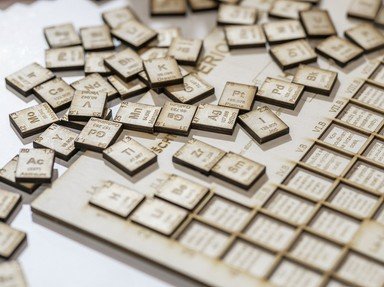Quiz Answer Key and Fun Facts
1. A neutral beryllium atom has four electrons, with two of them located in the inner 1s orbital, and the remaining two in the outer 2s orbital. What is the collective name given to the group of six chemical elements - beryllium, magnesium, calcium, strontium, barium, and radium, all of which have two electrons in the outermost shell?
2. Prior to 1900, the beryllium element is known by the name of glucinium. The meaning of this word, of Greek origin, is a reference to the taste of beryllium salts. Which taste is it? You may notice that the chemical compound glucose has the same prefix as glucinium.
3. Etymologically speaking, the name of the element beryllium is associated with beryl, which is a type of mineral that consists of beryllium, aluminium, silicon, and oxygen. Which of the following gemstones is NOT one of the varieties of beryl?
4. Though first isolated by Friedrich Wöhler and Antoine Bussy independently in 1828, beryllium was discovered much earlier in 1798 by a French chemist who also discovered chromium. Who was he?
5. Beryllium played a vital role in the discovery a subatomic particle in 1932. This scientific breakthrough earned British physicist James Chadwick the Nobel Prize in Physics in 1935. Which subatomic particle is being described?
6. Owing to its low atomic mass and density value, thin beryllium foils have been used in vacuum tubes of which electromagnetic radiation that is synonymous with medical imaging?
7. Anti-spark tools are used in fire-prone environments to minimize the risk of explosion. Which chemical element is mixed with beryllium to produce an alloy, represented by the chemical formula BeCu, that is noted for its spark-proof property?
8. In the late 1990s, beryllium-aluminium alloy was used in the manufacturing of pistons by British motor racing team McLaren. However, the use of beryllium in various engine components was met with protest from Italian motor racing team Ferrari. Which motor sport is being described?
9. Beryllium is a lightweight metal that can withstand a wide range of temperature variations. The primary mirror of Webb, used in the fields of astronomy and cosmology, is made of gold-coated beryllium reflectors. Which optical instrument is Webb?
10. In general, beryllium in solid form is not poisonous. However, inhalation or prolonged exposure to beryllium dust would lead to the chronic lung disease of berylliosis. Which American physicist, known for his contribution in the Manhattan Project, was a victim of berylliosis?
Source: Author
Matthew_07
This quiz was reviewed by FunTrivia editor
rossian before going online.
Any errors found in FunTrivia content are routinely corrected through our feedback system.
